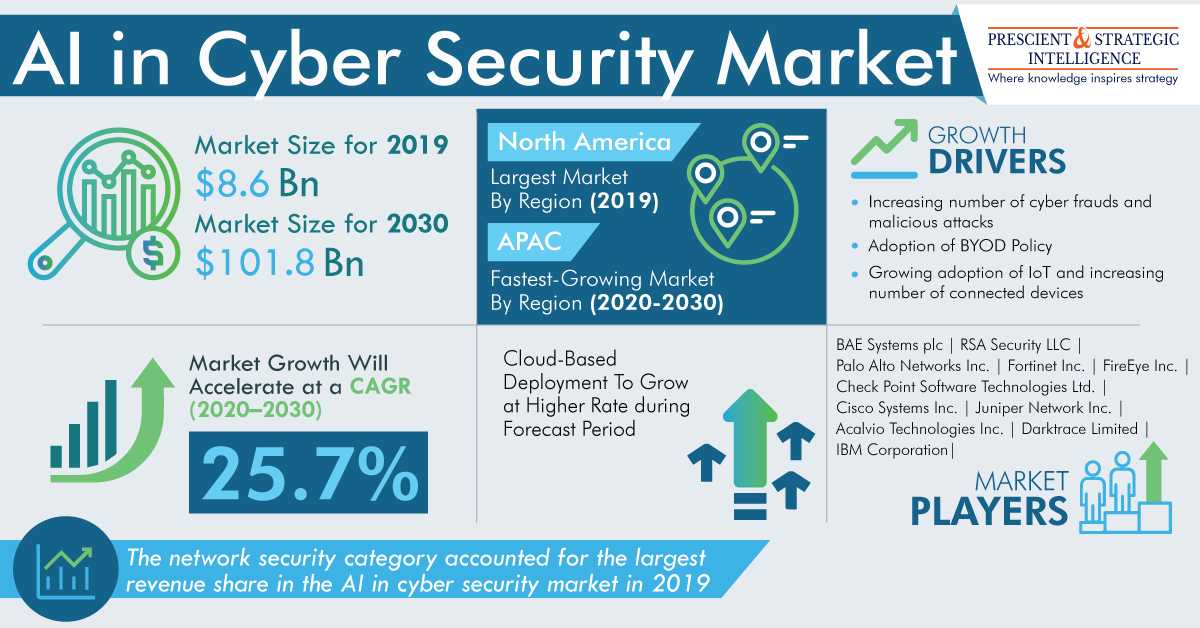Surging Prevalence of Cybercrimes Driving AI in Cyber Security Market
The global artificial intelligence (AI) in cyber security market revenue stood at $8.6 billion in 2019, and it is predicted to surge to $101.8 billion by 2030. According to the estimates of the market research company, P&S Intelligence, the market will demonstrate a CAGR of 25.7% from 2020 to 2030 (forecast period). The increasing digitization rate in several industries, growing penetration of mobile internet, shift from conventional banking to digital banking, and soaring investments being made by financial institutions, information technology (IT) companies, and governments in the AI technologies are the main factors driving the market.
The growing prevalence of cybercrimes is one of the major factors fueling the expansion of the AI in cyber security market. As per the U.S. Government Accountability Office (GAO) in August 2019, the cases of cybercrimes are rising sharply in the country in spite of the implementation of strict security measures. Cyber frauds, such as payment card and identity thefts, account for more than 55% of all cybercrimes, and they cause huge losses to businesses, if not addressed quickly. Moreover, AI-based solutions tackle cyber fraud by reducing response time, identifying threats, and refining strategies for distinguishing attacks that need immediate attention.
Besides the aforementioned factor, the growing implementation of the bring-your-own-device (BYOD) policy at workplaces around the world is also fueling the expansion of the AI in cyber security market. This policy is not only increasing productivity but also improving employee satisfaction. However, the policy is making corporate data highly vulnerable to cybercrimes as the devices of employees have various capabilities and the IT professionals may not be able to fully qualify, approve, and evaluate each and every device.
Depending on offering, the market is divided into software, services, and hardware categories. Out of these, the hardware category contributed the highest revenue to the market in the past. Whereas, the software category is predicted to exhibit the fastest growth in the market during the forecast period. AI systems require different types of software, such as application program interfaces (APIs), like language, vision, sensor, and speech data and machine learning (ML) algorithms to operate applications for cyber security.
Geographically, the Asia-Pacific (APAC) region is expected to be the fastest-growing region in the AI in cyber security market throughout the forecast period. This is attributed to the surging number of customers inclining toward plastic card and online payments via wireless or wired networks and the growing incidence of cyberattacks in the region.IN addition, the growing need for safer transactions, owing to the soaring occurrence rate of cybercrimes and rising digitization of operations, is also driving the progress of the industry in the region.
Hence, it is safe to say that the demand for AI in cyber security will shoot up in the coming years, primarily because of the rising prevalence of cyberattacks, shift from conventional banking to digital banking, and rapid digitization of business operations all over the world.
Get More Insights: https://www.psmarketresearch.c....om/market-analysis/a
